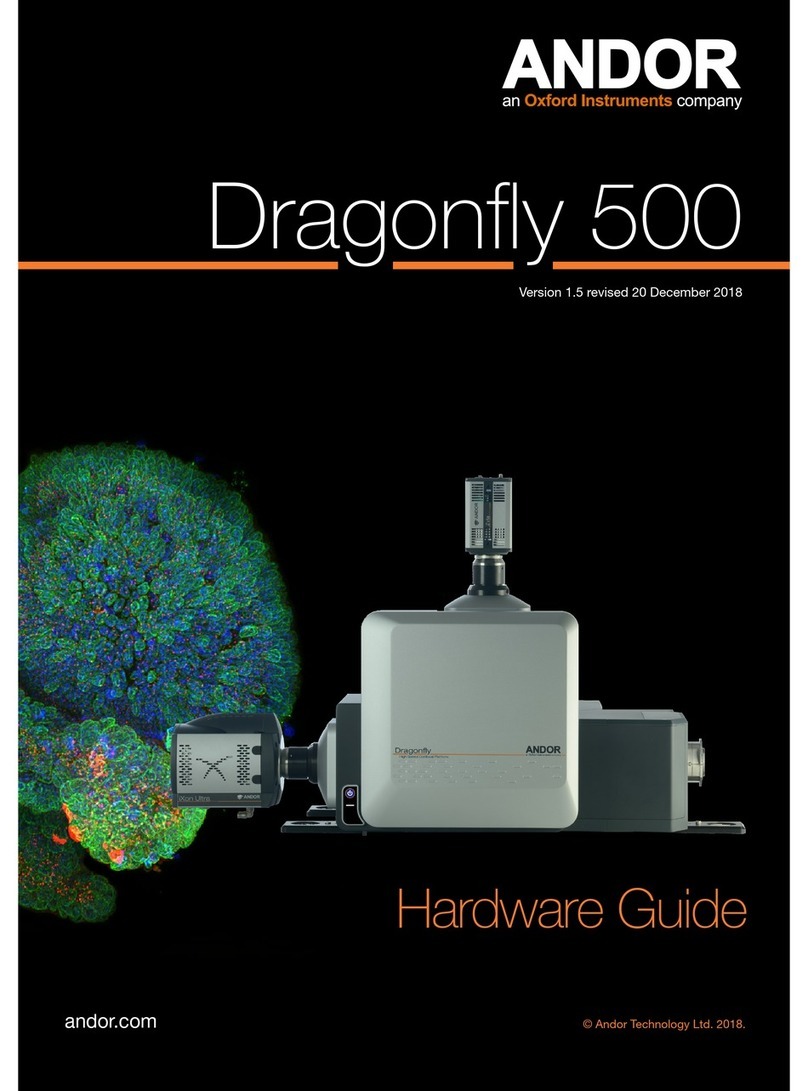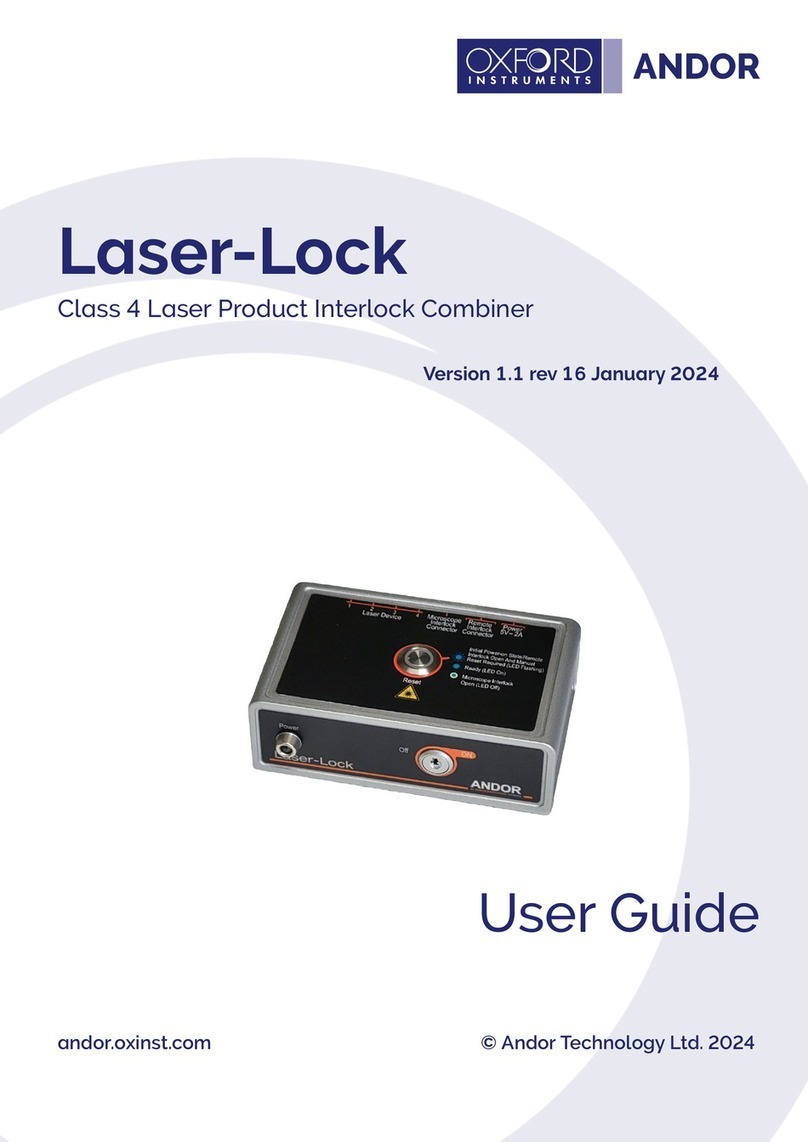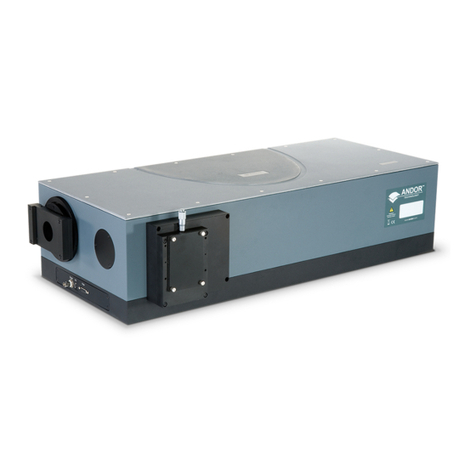
9
Version 4.2 rev 06 Oct 2020
8.2 x 8.2 mm / 512 x 512 sensor
Lowest Noise Imaging EMCCD
Mechelle
guidelines for tHe safe operation of laser products
Please note that not all of the following guidance may apply to your product, e.g. you may not have invisible
lasers.
1. Never look into a laser beam either directly or indirectly.
2. Read the safety instructions supplied with all equipment in the system.
3. Ensure that the laser equipment is used in accordance with national guidelines.
4. Ensure all personnel requiring access to the product are fully trained in both using the product and the general
use of lasers.
5. Ensure users are familiar with the hazardous properties of lasers, especially that laser safety hazards differ
from those of normal light/radiation sources as they are highly-concentrated, very low divergence beams of
radiation.
6. Ensure end-users are familiar with the operation of the laser’s key switch control, interlocks, emission LEDs
and other safety features.
7. Restrict and control access to the area(s) where laser(s) are in use to those persons who are trained in the
dangers of lasers and trained on the safety precautions to be observed when working with lasers.
8. Ensure that all interlocks are connected and functioning correctly, where applicable.
9. Ensure suitable laser warning signs are prominently displayed in the area the system operates.
10. If the system is not in use, turn the laser off using the key switch, where applicable.
11. Do not attempt to disassemble the unit housing the lasers or any part of the system. If there is a problem
please contact Andor directly (see Section 1.1, ‘Technical Support’).
12. On a daily basis, or before every use, verify that the laser interlock circuit (if applicable) is working by
conrming that the laser emission indicator on the source(s) turns off when any of the following are done:
• The microscope ocular eyepieces are activated/engaged for viewing.
• The articulated transmitted light arm on inverted microscopes is tilted back from the functional vertical
position before using the system.
• Each beam splitter is removed from the unit.
• Any other interlocks on your system.
13. Fluorescent cards should be used to visually locate and indicate the output of invisible wavelengths at all
times, where applicable.
14. Additional precautions may need to be implemented as the necessary precautions will be specic to each
system installation, conguration and typical mode of use. The responsible Laser Safety Ofcer must assess
and implement the necessary precautions to avoid possible exposure to hazardous radiation during use.
15. We recommend that a copy of the latest edition of IEC 60285-1 Safety of laser products – Part 1: Equipment
classication and requirements is purchased by the Laser Safety Ofcer for reference, as well as IEC 60825-14
Safety of laser products – Part 14: A user’s guide.






























